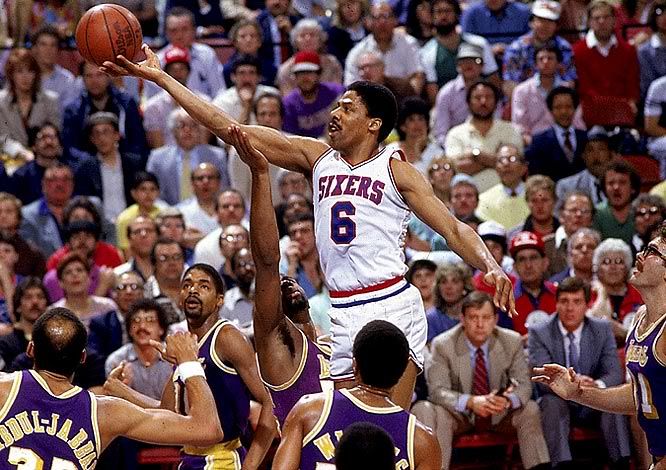The Third Man
Exhausted after a long week of talking about reserve currencies, the Fed pushing on a string, and Fibonacci retracements, I settled into bed tonight. Savoring the cool pillow case against my cheek, I took a breath and began my nightly ritual of imagining in detail each of the fifty-three stations of the Tōkaidō...when my eyes snapped open.
What about Erving?
Was it all a dream then? He wasn't...really...he wasn't one of the greats, was he? He wasn't really a shooter...or a passer...so what was he? Yes, before Bird vs. Magic there was Bird vs. Erving. But after Bird and Magic, what is there to remember about Erving, except for some dunks and The Baseline Move? Oh yeah - The Baseline Move...!
Still...did Erving ever lead the NBA in anything?* Wasn't he really just a stylist, or...even more damning...a PR man for the emerging and more marketable urban style of basketball?
Well, how would you decide? I settled on a simple procedure: Basketball Reference has a list of the 250 greatest seasons ever played in the ABA and NBA (left column). Players are ranked by Win Shares - a metric (originally devised by baseball analyst Bill James) that estimates a player's contribution to a team's overall success. I sorted the list by player, then deleted all the players with fewer than six seasons on the list, and all the non-forwards. That narrowed things down to this group (height, average Win Shares per season):
- Kevin Garnett (6-11, 15.1)
- Karl Malone (6-9, 15.1)
- Larry Bird (6-9, 14.9)
- Julius Erving (6-6, 15.4)

* Yes, Player Efficiency Rating, 1979-80.
Good-night.
[Addendum: David Friedman at 20 Second Timeout writes extensively about NBA history, and offers this assessment of Erving's greatest ABA performance:
Erving [had] these numbers in the 1976 ABA Finals versus the Denver Nuggets: 37.7 ppg (including 45 points and the game winning shot on the road in game one), 14.2 rpg, 6.0 apg, 3.0 spg and 2.2 bpg. The Doctor led both teams in all of these categories during the series—and he was putting up these unbelievable numbers against high quality opposition. Guided by Hall of Fame coach Larry Brown, the Nuggets finished 65-19 that season, featuring two Hall of Famers (Dan Issel and David Thompson) and one of the best defensive forwards of all time (Bobby Jones). After trying in vain to stop the Doctor, Bobby Jones offered this appraisal of Erving’s heroics: "He destroys the adage that I’ve always been taught—that one man can’t do it alone." ]


0 Comments:
Post a Comment
<< Home